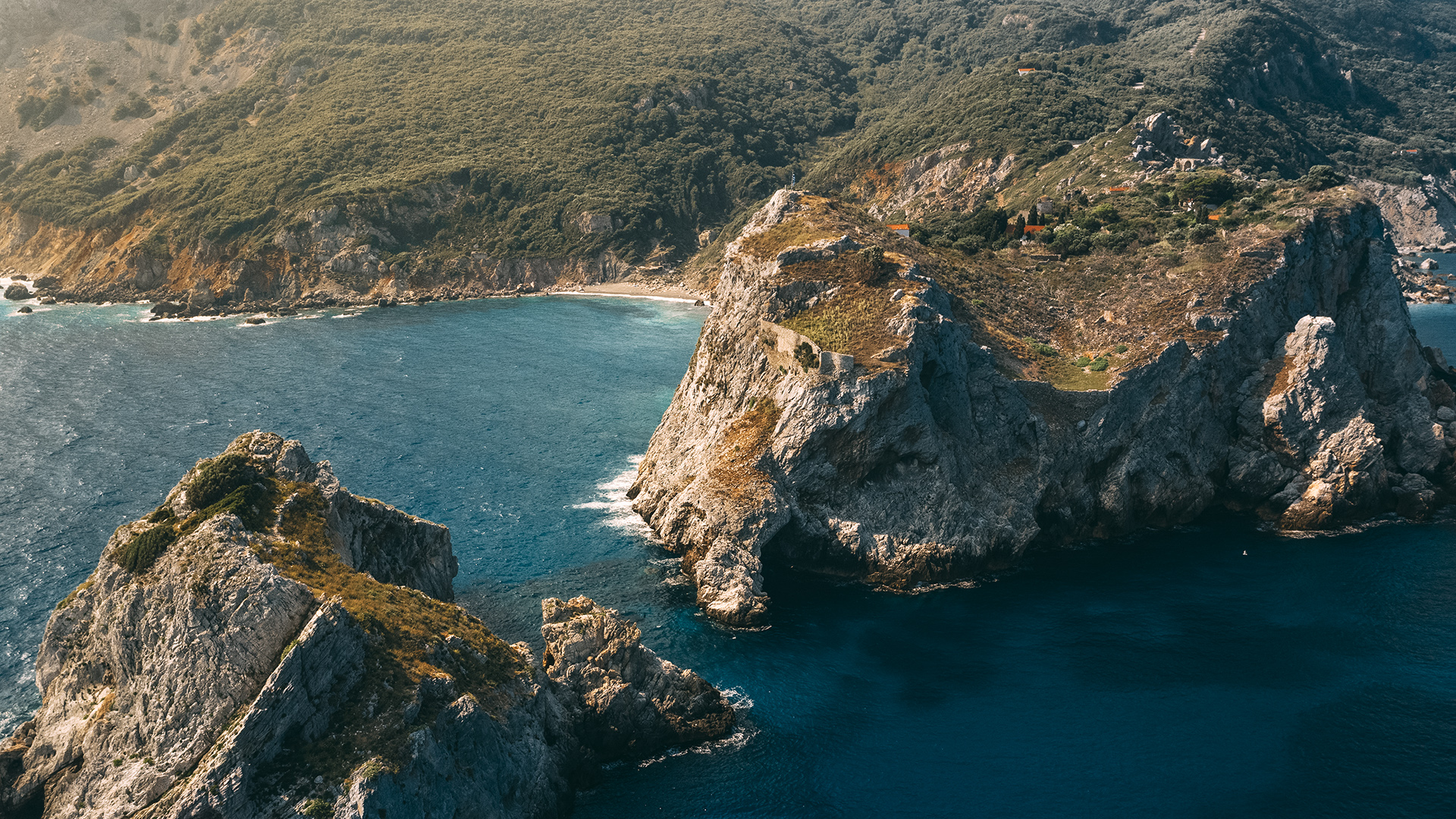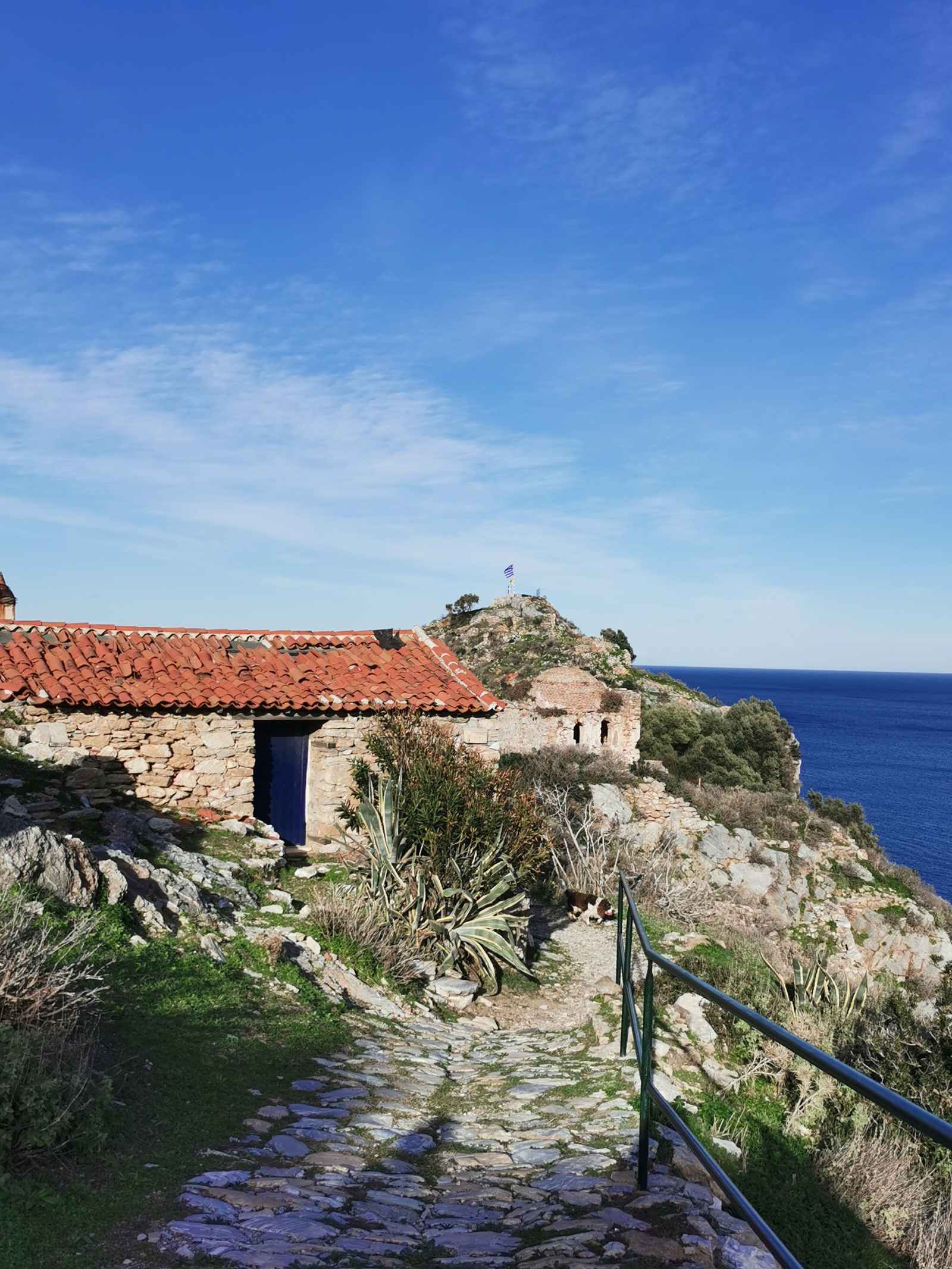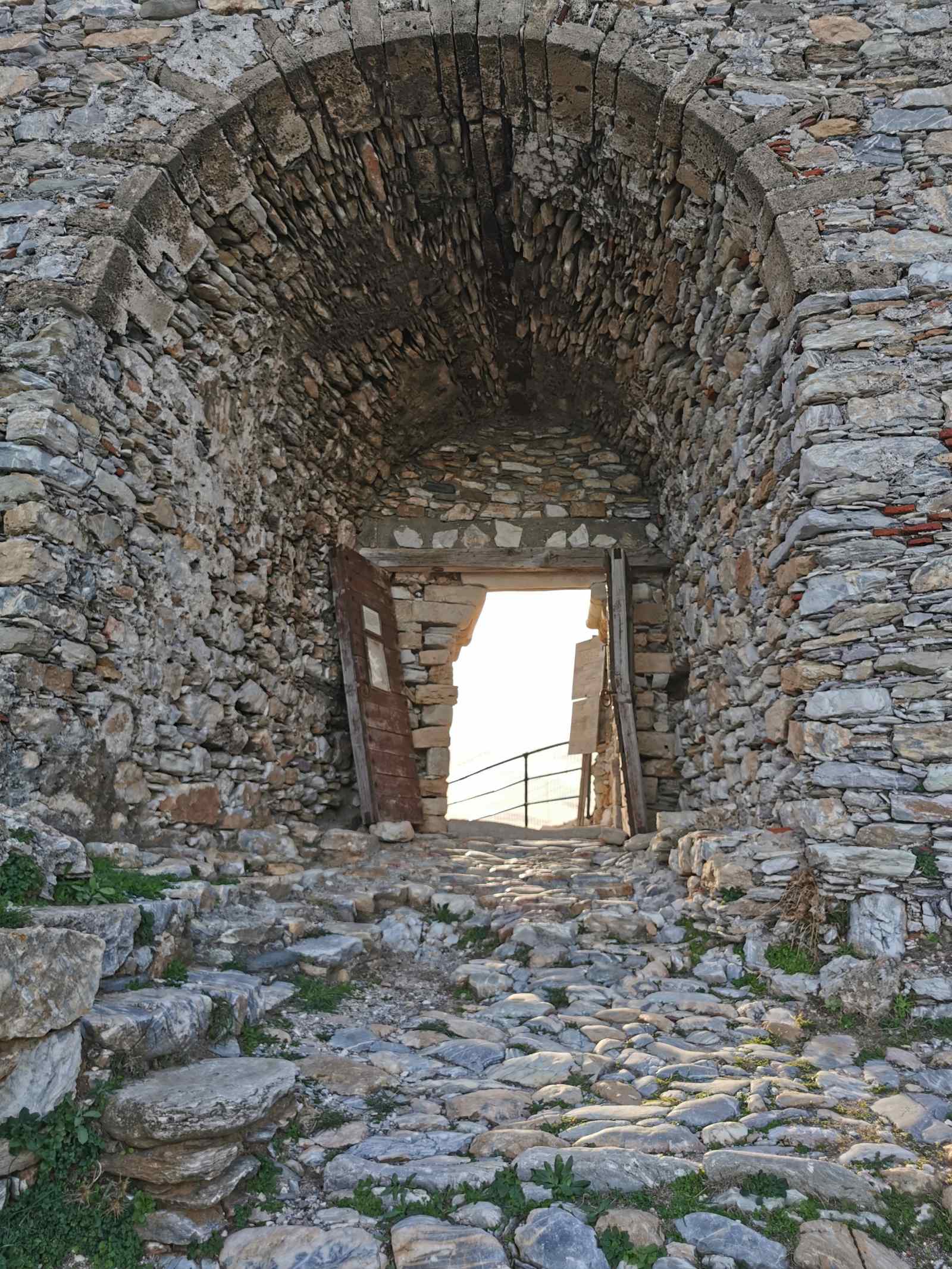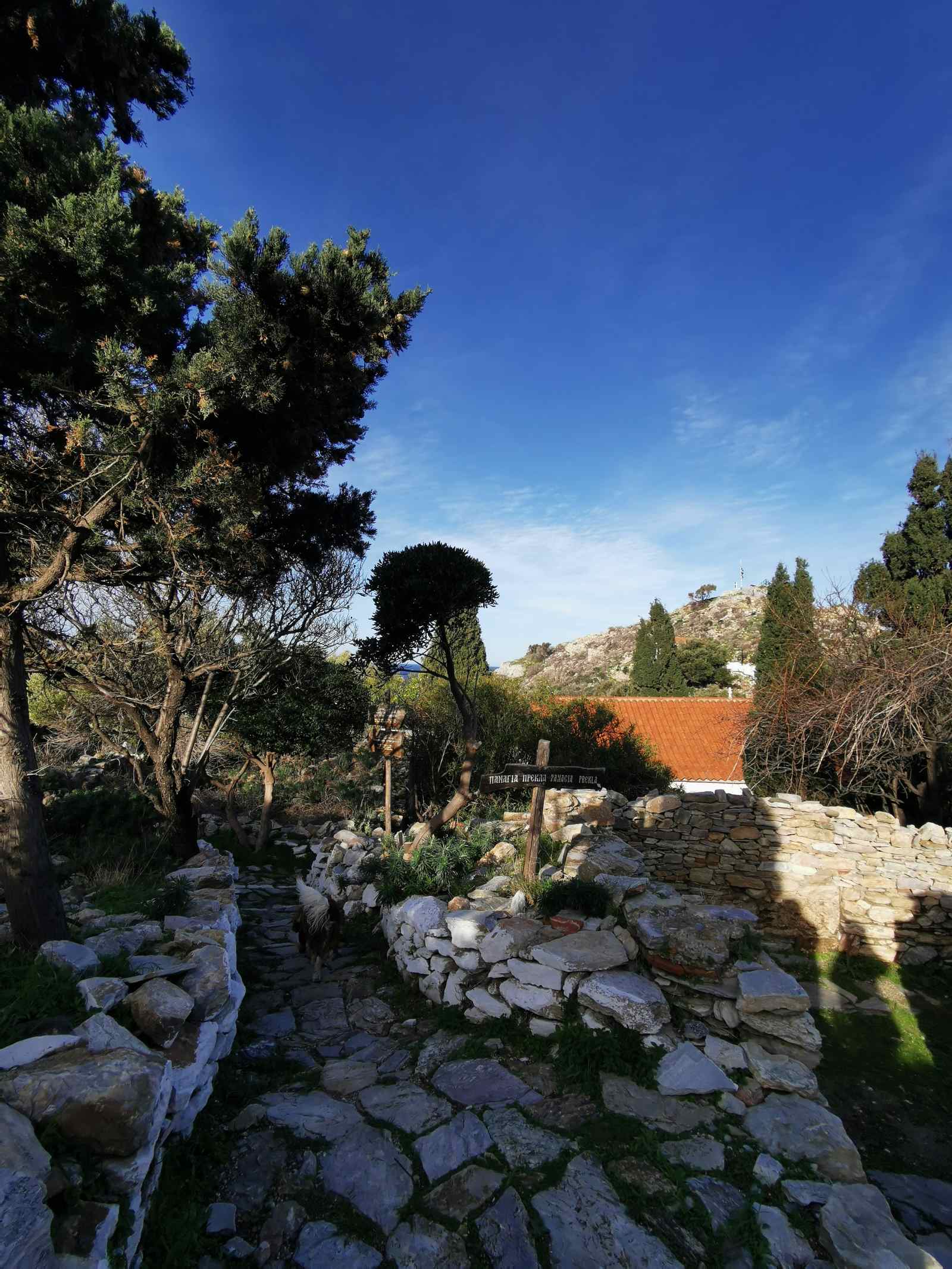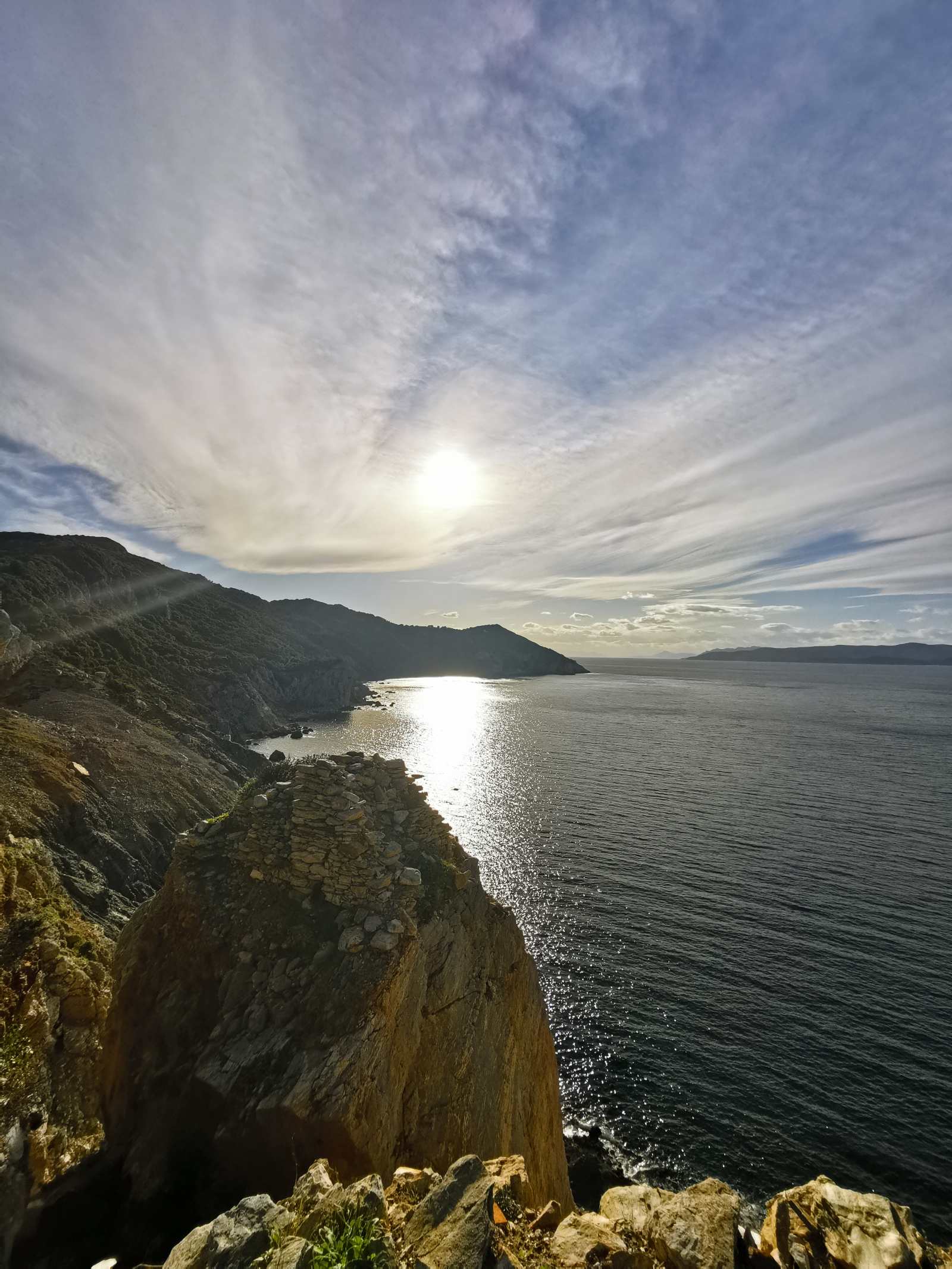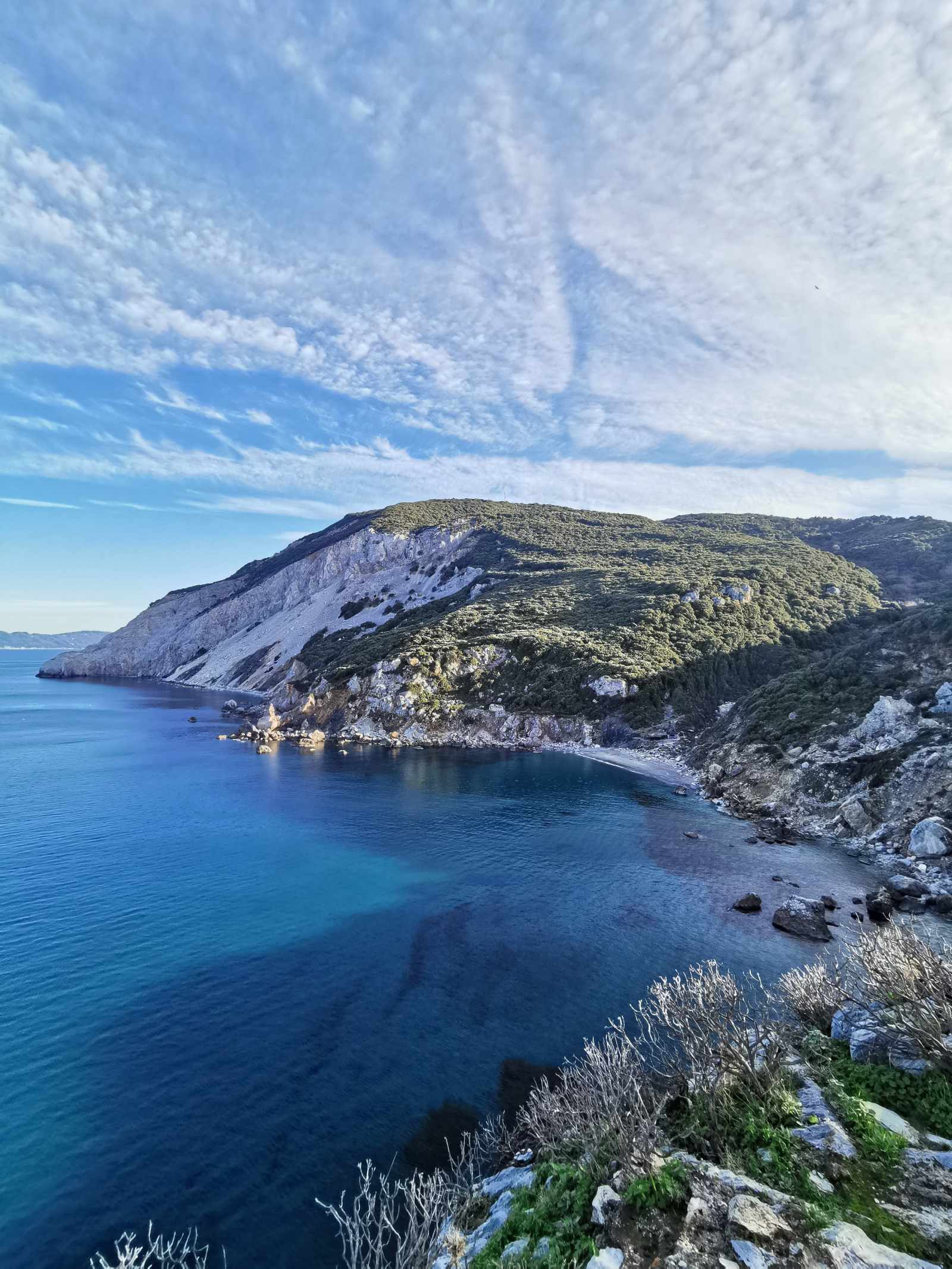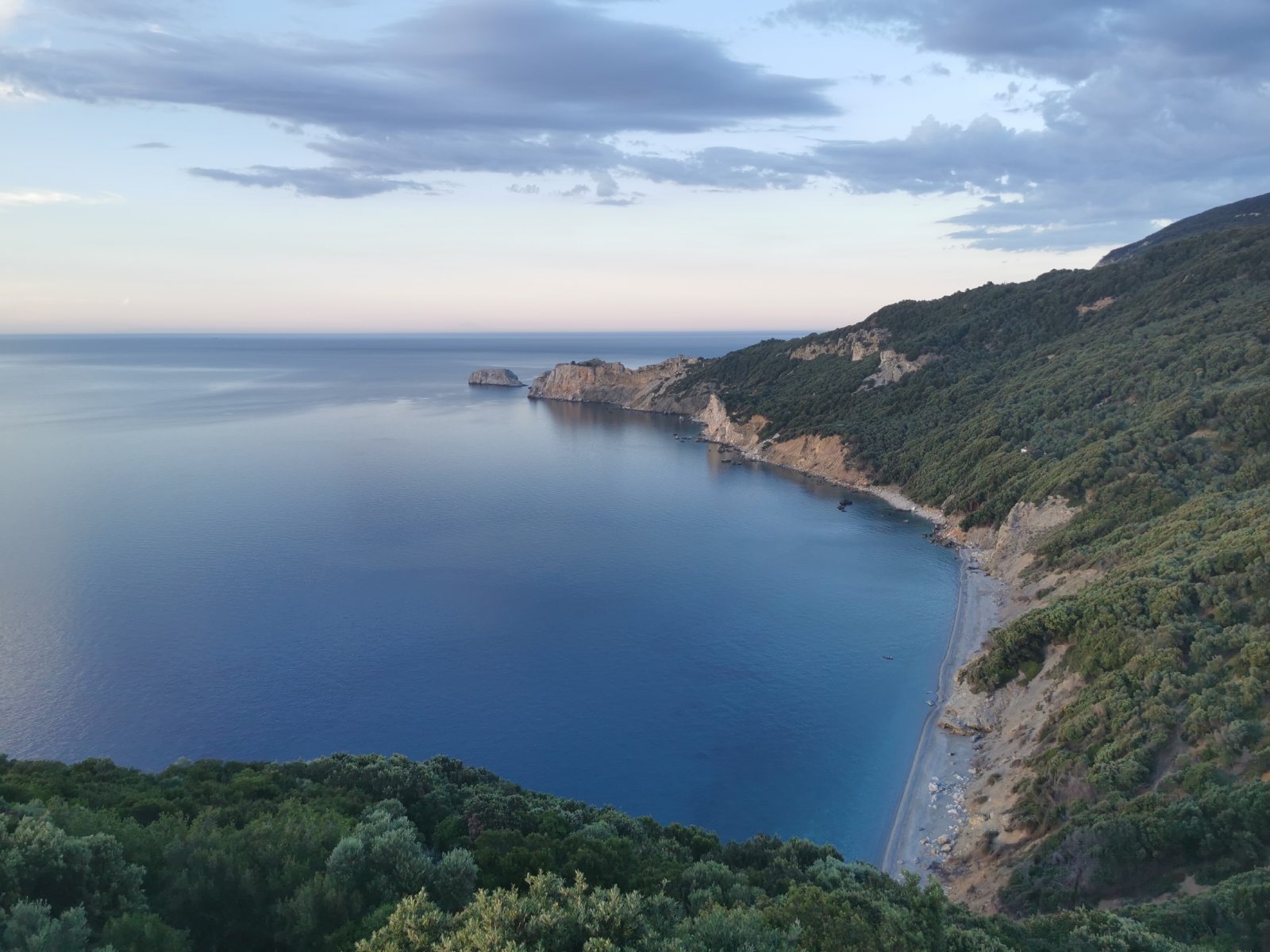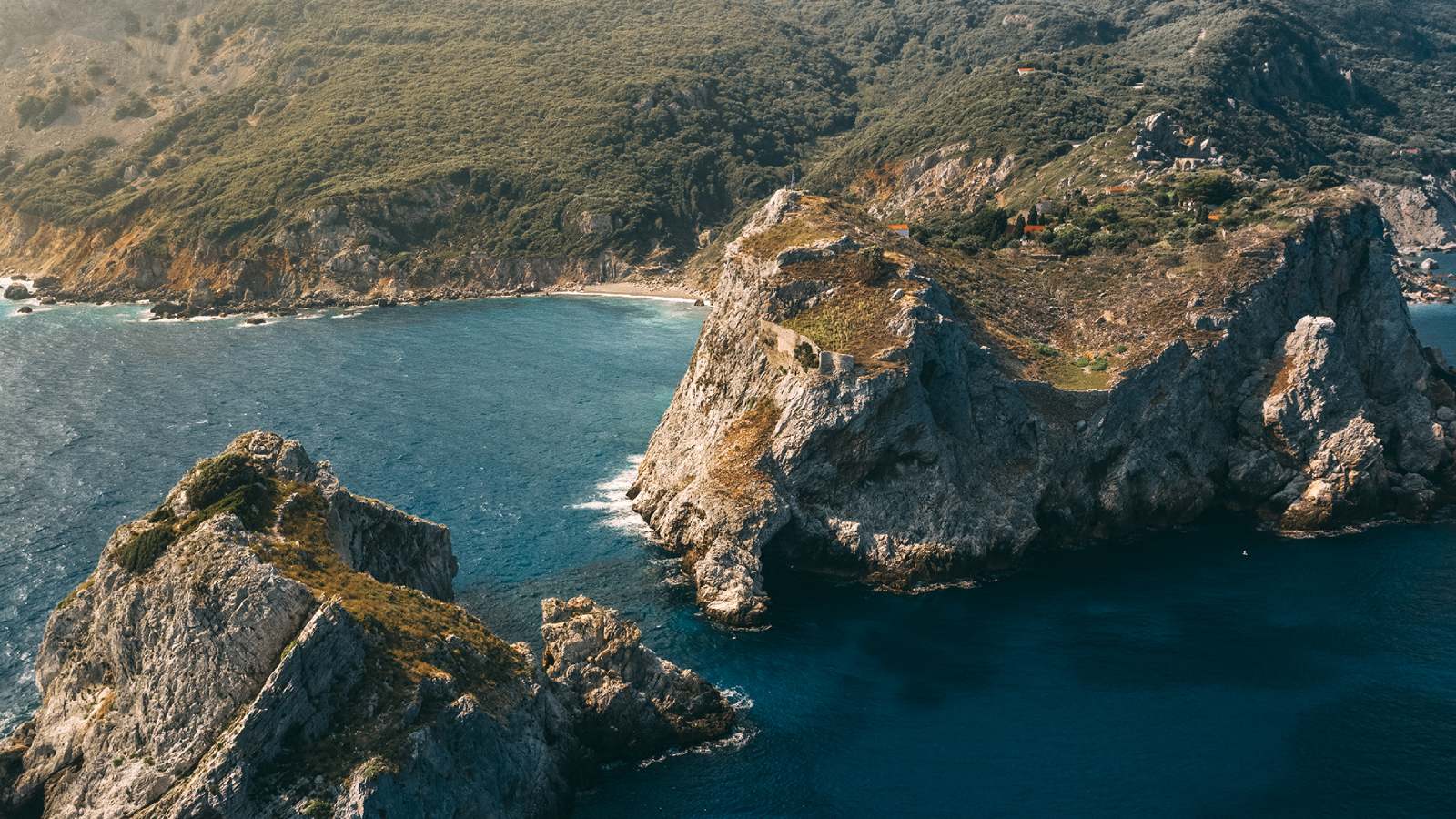Kastro (Castle)
Skiathos’ famous ‘Castle’ is a monument of extraordinary, awe-inspiring beauty. In medieval times, around the middle of the 14th century, locals decided to leave the island’s ancient, main city, due to constant pirate invasions, and moved towards the northern part of the island, where they founded the Castle as their new capital. There, they felt safe and secure since the area’s natural fortification made it the perfect shelter against all kinds of attacks.
This natural fortress seems to be literally “hanging” above the sea, as it is built onto an imposing, enormous mass of rock. Moreover, its panoramic view as well as its towering walls with casemates and cannons reinforced its already impenetrable fortification. The fort’s contact with the rest of the land was accomplished through a movable, wooden bridge, which linked the fort’s gate with the butte right across. In case of an emergency, the bridge was slid towards the inside of the Castle so that the enemy’s access was blocked. Additionally, in front of the fort’s main entrance, there was a gallery and above the entrance there were one turret and a rooftop with casemates and the “zematistra” (: a small type of balcony from where locals attacked invaders).
In 1829, locals decided to permanently leave the Castle and settle back to the island’s main town (as we know it today). On their way back, they took with them much more than just their personal belongings: they took all kinds of building materials such as frames, windows, doors, roofs and wood from anywhere they could find, so that they would use them to rebuild their homes. As a result, the area around the Castle was very abruptly desolated. From its approximately 20 churches and its 500 households, today only 2 parish churches have still been preserved. The area’s population ranged between 1000 and 1500 residents.
Right below the fort, there is a magical beach also called ‘Castle’ (Kastro). A fresh swim in its crystal clear waters, combined with a visit to the Castle’s astounding old town is, absolutely, an unforgettable experience you should not miss during your stay on the island. Access to the place is very easy: you can either use one of the little cruise boats that start every morning from Skiathos’ port or you can use your car (after you park your vehicle, there is a 10minute walking distance).
Saint George’s footprints
A few meters prior to the Castle, in between the old cobbled street’s stones, you will discern some small, cylindrical cracks, similar to a horse’s footprint. According to the island’s folk tradition, these footprints belonged to St. George, whose steps the locals used to hear from inside of the Castle, every night. This story is probably related to a local belief that, near the Castle’s gate, there was a small church dedicated to St. George. Yet, another folk tradition construes these signs (the ground’s cracks) as footprints made by “Jesus Christ’s Horse”.

